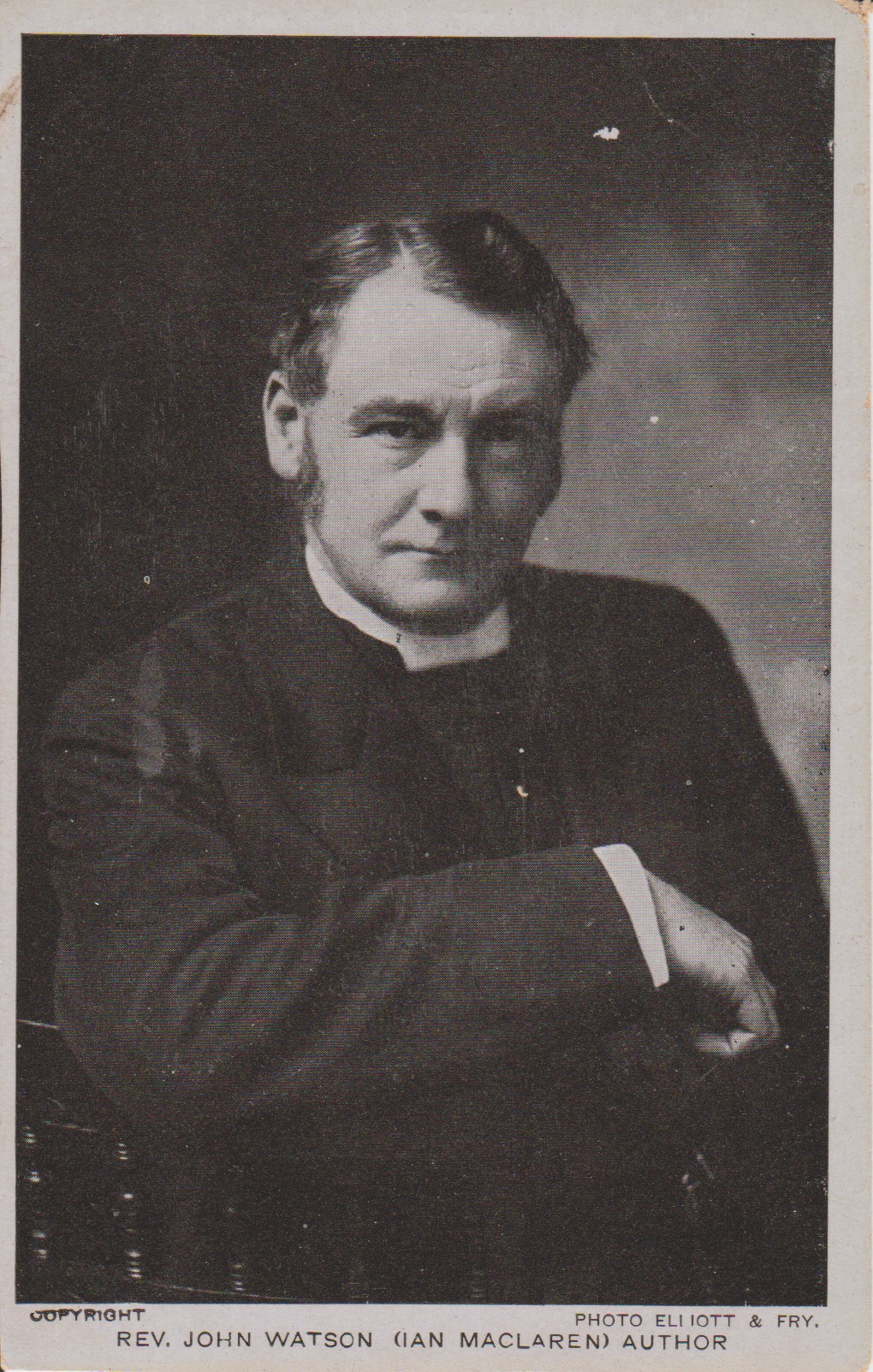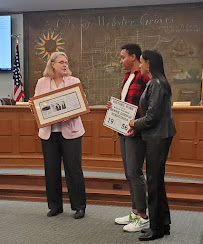“Genuine Authority”
sermon for Sunday, January 28, 2023 - Heritage Sunday
including thoughts on the life and ministry of
the Rev. Dr. Charles Luther Kloss
Jesus and his new disciples went into their home town of Capernaum; and when the sabbath came, he entered the synagogue and taught.
They were astounded at his teaching, for he taught them as one having authority, and not as the scribes.
Just then there was in their synagogue a man with a spirit of uncleanness, which cried out, “What have you to do with us, Jesus of Nazareth? Have you come to destroy us? I know who you are, the Holy One of God.”
But Jesus rebuked the spirit, saying, “Be silent, and come out of him!”
And the unclean spirit, convulsing the man and crying with a loud voice, came out of him.
They were all amazed, and they kept on asking one another, “What is this? A new teaching with authority! He commands even the unclean spirits, and they obey him.”
At once his fame began to spread throughout the surrounding region of Galilee. (Mark 1:21-28)
Jesus taught, the gospel of Mark says about him, “as one having authority, and not as the scribes.” What exactly did the author mean by that?
It might be that, for the scribes, one’s highest understanding of an encounter with the scriptures meant diving into a debate about the meaning of a passage. The true scholar would defer to wiser interpreters. Authority, in that case, would indicate it was based in the strongest argument or, perhaps, the one that most agreed with your perspective. Authority was in the text but had to be teased out.
But the evangelist continues with another example of Jesus’ unexpected version of authority. Suddenly, a man possessed by a spirit of ritual uncleanness confronts Jesus. The rabbi commands the spirit to silence and casts it out of the poor soul.
Now the observers are even more amazed than they were at the end of Jesus’ message. They perceive that he is possessed of an authority that not only states with precision the meaning of the Law and the Prophets, but he can command spirits. He not only won’t take guff from human opponents, he won’t take it from supernatural opponents either.
It is tempting to read this passage and imagine that Jesus was some kind of an authoritarian, insisting on his interpretation of scripture and his alone (not as the scribes). Or one might be persuaded that his authority was some kind of supernatural endowment that he’d been bestowed.
Personally, I don’t think either option is correct. I am persuaded that Jesus’ authority, which wasn’t like that of the scribes and which could cause even unclean spirits to comply, was rooted in the way he interacted with others. He met people where they were and as they were. He, and his truest disciples after him, would be faithful to others and seeking to live the love of God.
As an indication of what I mean by this, consider what Paul said to the Corinthians:
When I came to you, siblings, I did not come proclaiming the mystery of God to you with lofty words or wisdom. For I decided to know nothing among you except Jesus Christ, and him crucified. (1 Corinthians 2:1-2)
In short, Paul wanted Christians to be acquainted with Jesus has he had been, confronted by an individual who could know them and who had lived as they would hope to - the most faithful and gracious life they could. He knew that human beings are the best example of their own religion, not doctrine or dogma.
 |
| Kloss in 1896 |
This is Heritage Sunday, as we’ve said, and the individual I want to talk with you about was the eighth pastor of the church, Charles Luther Kloss (which may have been pronounced, “close”). Dr. Kloss published a tract not long after he arrived here as pastor in 1898. It was titled, “Personality and Truth,” and it was a meditation on this very matter I’m discussing with you now. He would write:
It would be a document of surpassing value to go through history and disclose how men surrendered, not so much to the moral theories and teachings of Jesus, as to His personality, something greater than any word He said. He is the Way, the Truth and the Life.
It was how Jesus incarnated the Word of God that made Christianity a movement. It was who he was – for others – that drew his followers close and caused them to want to be like him.
Any doctrine or dogma, theologic or economic, no matter how valuable, is bound to moulder on the shelf unless it captures a living person. To have power it must be incarnate.
That is what Jesus did for the Word, and – Kloss was convinced – what every individual Christian must endeavor to do as well.
Kloss would identify a grand series of examples of this – the apostle Paul, Dante, Martin Luther, and (lest you think he would shy from controversy) Charles Darwin – each of these men striving bravely to make what they understood into what they lived.
Yes, Dr. Kloss could be very enthusiastic about human potential, particularly Christian human potential. Indeed, another tract he published, this one at the start of his pastorate in Philadelphia, was taken from four sermons he, no doubt, had preached here. “Four Studies in Optimism,” he called it. In it he identified how the qualities of enthusiasm, self-sacrifice, fearlessness, and prompt blessings are essential to genuine Christian living. All of them make the practitioner better and incline them to still greater works.
 |
| Rev. Daniel Kloss |
Charles Luther Kloss was of the generation that came of age after the Civil War who were optimistic, perhaps out of necessity, perhaps as a balance to the grief that was teeming around them due to a war that had claimed more lives than just those who had died. Born in 1862, in New Berlin, Pennsylvania, he was the middle son of Daniel and Rebecca Kloss.
 |
| Rebecca Kloss |
Both his parents were descended from Germans who had settled Pennsylvania in the late 1700s, and they kept their family traditions, to a point. Daniel was a Lutheran pastor who left that tradition in the 1870s to become a Congregationalist. His first assignment as a Congregationalist was the new church start in Axtell, Kansas, a refueling and water station for trains on the Western Pacific Railroad, about parallel with St. Joseph, Missouri, and not far south from the Nebraska state line. Axtell was the town where Charles Luther Kloss spent his youth.
After high school in Axtell, Charles went to Highland College in Highland, Kansas. He earned a B.A. there in 1882, a B.D. from Yale Divinity School in 1885, after which he was ordained, and a master’s degree from Highland in 1886. He also attended a course of study at the Universities of Berlin and of Heidelberg, in 1886 and 1887.
Upon his return to the States and his return to the church at Axtell, he met Mary Phillips. She was the church organist. After marrying in 1888, they moved to Argentine, Kansas, where he served a church until 1891. He served the Tabernacle Church in Kansas City from 1891 to 1897, and our church from 1898 to 1904.
 |
| Rev. Dr. John Watson |
In 1900, the Congregational Union called for its churches across the U.S. to adopt a lengthy creed as part of our process for receiving new members. Dr. Kloss (he received honorary degrees from Highland College and Drury College during his first pastorate here) wrote a creed of his own. It was based on a document penned by the Rev. Dr. John Watson (who wrote had the pseudonym Ian MacLaren). Watson an English theologian, lecturer, and ecumenist who devised in 1896 what he called “A Creed of Christian Life.” Dr. Watson’s creed went:
I believe in the Fatherhood of God. I believe in the words of Jesus. I believe in a clean heart. I believe in the service of love. I believe in the unworldly life. I believe in the beatitudes. I promise to trust God and follow Christ; to forgive my enemies, and to seek after the righteousness of God.
Dr. Kloss’s adaptation of this statement included a familiar opening line of the affirmation of the International Order of Odd Fellows. Their opening line expanded Dr. Watson’s sentiment to “I believe in the Fatherhood of God and the brotherhood of man.” This addition was crucial to Dr. Kloss’s optimistic estimation of a Christian’s potential. Thus, Webster Groves’s Creed said,
I believe in the Fatherhood of God and the brotherhood of man. I believe that Jesus Christ is the Way, the Truth, and the Life. I believe in the clean heart, the unworldly life, and the service of love that Jesus taught and exemplified. I accept His Spirit and His teaching.
He wanted his people to become attached not to mystical statements of faith but to ideas they could actually accomplish, which had been Dr. Watson’s intention also.
The words found favor here, and I have little doubt that their universality and Dr. Kloss’s winning personality set our church off with success that would not abate for three-quarters of a century. We would continue to repeat the Creed in worship until 1984, and I adapted a form of it into the reception of new members ritual we use.
Dr. Kloss carried the Creed with him to all of his subsequent churches. It was featured on the covers of bulletins in Philadelphia and San Mateo, as it had been here.
Bring me men to match my mountains;Bring me men to match my plains;Men with empires in their purpose,And new eras in their brains.Bring me men to match my prairies,Men to match my inland seas,Men whose thought shall pave a highwayUp to ampler destinies;Pioneers to clear Thought’s marshlands,And to cleanse old Error’s fen;Bring me men to match my mountains –
Bring me men!
His confidence in the authority of personality over the authority of doctrine, for convincing others of the value of our religion did not rest solely on the shoulders of men, however.
The Woman’s Association gave one sigh of relief, but so great a change was this new order of things that the busy women who had for years racked their brains and nerves over devices for putting their mite into the treasury, seemed suddenly to have lost their natural occupation… [I]n due time the space vacated by entertainments was filled with useful work for charitable institutions… (A Brief History of First Congregational Church of Webster Groves, 1906)
In January 1902, Kloss told church members that he was frustrated with only having presided twelve weddings in 1901. He asserted that he wanted women who were ready to marry to go ahead and propose. He said, he thought that by doing this he would be bound to preside at least 50 weddings in 1902. He printed this suggestion in the weekly bulletin, and a member of the church who was a journalist with the daily newspaper, the St. Louis Republic, published his opinion paragraph there. Next, the Post-Dispatch picked it up. The idea seemed to shake some people to their cores, and his testimony got picked up by papers across the country!
 |
| The item as described, in the Republic January 3, 1902 |
Piles of letters, pro and con, filled the church mailbox in response.
 |
| Follow-up story in the January 17 Marthasville Record |
Shortly after arriving to begin his second pastorate here, in 1912, Dr. Kloss – still inspired by his understanding of “Personality and Truth” – would spearhead an effort to fill what is now the north end of our east parking lot with a recreational facility for youth. He struggled until 1916, trying to pull together the $16,000 he said the church would need to make the vision a reality, but it never came to pass. This was by all indications his sole disappointment in his work here as pastor.
As I read the rest of his history among us, I perceive that he considered the recreational facility effort at best as a personal failure. At worst, he considered it a vote of no confidence on the part of the church. And by the end of 1917, he had set his sites on California. Charles Kloss concluded his service at churches in Oakland and San Mateo.
But he never lost his sense of optimism. He never lost his belief in the truth of Christ expressed through the human spirit, which draws us in, impels us onward, and holds us… close (Kloss?) – winning hearts and spirits for the good news of God’s love. For there lies reliable authority, not in doctrine, not in dogma, but in “Christ, and him crucified.” (1 Cor 2:2)





